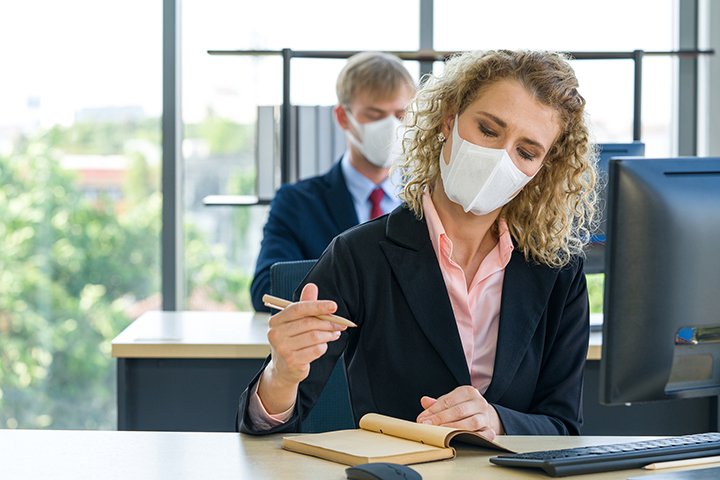What will the office look like post COVID-19?

As provinces inch toward easing COVID-19 restrictions, workers may be surprised when they finally go back to work.
Brace yourself for the “new normal,” say experts who design and layout offices for a living. Employees can expect lots of safety protocols including greater distance between desks, mandatory masks, shift work and lineups to take crowd-free elevators or get a temperature check, said a recent CBC News report.
Companies will need extra safety measures in place before employees can return. In some cases – depending on the industry - the office may become a place for collaborative work only. Others may continue to work remotely.
"It's going to be drastically different than when they left," David Galullo, the CEO of Rapt Studio, told Business Insider of what workers can expect. His firm designs office space for tech giants like Dropbox, Google and LinkedIn.
"We don't go through something like this as a global society without things shifting about how we come together," Galullo said.
Employers may also have to factor in a second wave of the disease in the fall. Above all, companies are going to have to figure out how to adjust the workplace to make people feel safe. One thing is certain, the office of the future will be a changed landscape – at least until a COVID-19 vaccine becomes available.
The changes required to the workplace will also take time to implement. In other words, a return to the office won’t happen quickly. Many industry groups and architectural design specialists are coming up with guidelines to help employers.
"It will be a very slow, graduated return to work with employees that are critical to the business," Lisa Fulford-Roy, a senior vice-president with commercial real estate giant CBRE, told CBC recently. "A lot of the social areas that we use when we're at work — break spaces, lunchrooms, food courts, cafés — many of those will be coming back slowly, as well."
Some of these changes, as reported by CBC, are likely to include:
- More personal space –Seating plans will likely be modified in order to physically distance workers. That could include everything from skipping workstations to erecting dividers between cubicles. Open-plan offices – originally used to encourage teamwork and collaboration - will have to be rethought given they tend to encourage the spreading of a cold or flu, for example.
- Shift work – Because of COVID-19, densely populated indoor environments are no longer desirable. Global architecture, design and planning firm Gensler suggests office managers “rethink density” while transitioning people back to work and even has a tool kit suggesting various measures including staggering desks, a larger perimeter of free space, heightened cleaning/disinfecting regimens and strategies for common areas. The firm developed "generative algorithms" that can take the existing layout of a workplace and create new scenarios that meet physical distancing guidelines.
Annie Bergeron, Gensler's design director in Toronto, says the firm is also suggesting workers' hours be modified. "One of the strategies that we are recommending for re-entry into the workplace is either shift work or a balance of work from home and work from the office, so that you don't have too many people re-entering the workplace at the same time," Bergeron told CBC. - Temperature checks -Walmart and Amazon have already implemented temperature checks for workers. In Canada, Tim Hortons has mandated masks and temperature checks for employees.
- Physical changes:There may be new ways to move around a building or use certain spaces. "I think you'll see one-way hallways and clear directional pathways around the office," Brent McKnight, an associate professor in strategic management at McMaster University's business school in Hamilton, told CBC. "Perhaps even physical markers like what they have in grocery stores and other places, to show people what a physical distance of two metres actually looks like."
And, what about all those personal items you have on your desk? You’ll likely have to keep it free of clutter so cleaning crews can do their jobs, Primo Orpilla, a cofounder and principal of Studio O+A, told Business Insider. “The usual myriad trinkets, dog photos and children's drawings that usually decorate desks likely won't be part of office life for a while,” Orpilla said.
There’s a human element too. People may be apprehensive about returning to work and employers will have to communicate their plans and preparations. If employees have questions, they should ask.
"There's so much more than just putting up screens and disinfectants," Melissa Hanley, the CEO of the design firm Blitz, told Business Insider. "There's a human aspect of this that can't get lost in the conversation."
RELATED READING:Your guide to help during COVID-19